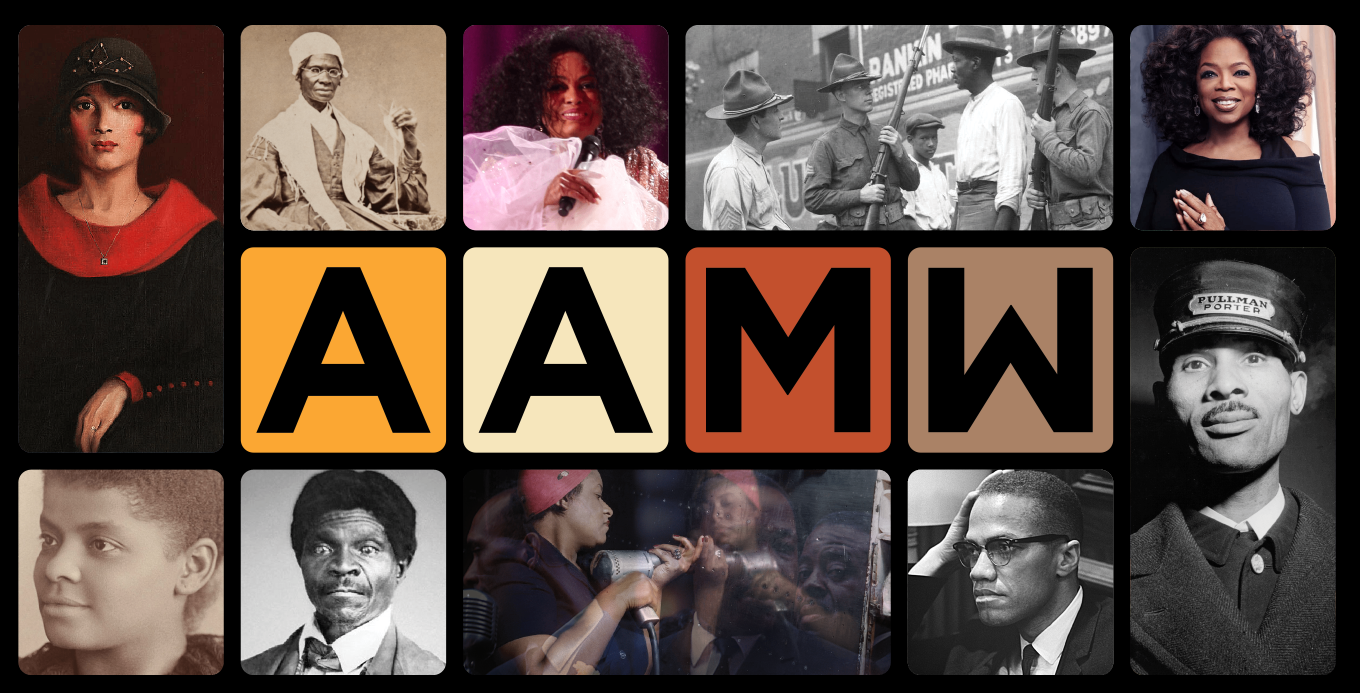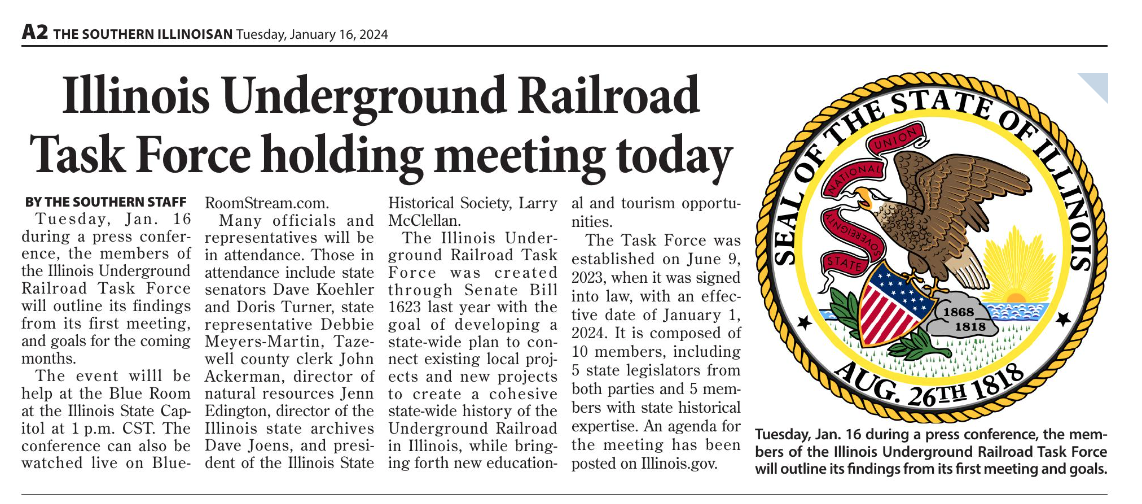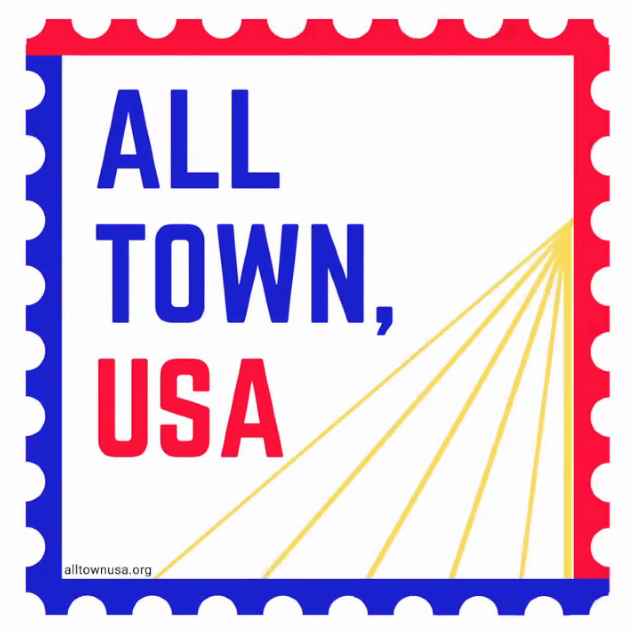African American history in Illinois is complex and compelling. The tragedy of slavery played out over centuries (even when Illinois was ostensibly a “free state”. And notwithstanding passage of the 13th, 14th and 15th Amendments of the U.S. Constitution, there still were episodes of violent racism and/or institutional racist actions.
In the late 1700s, when what is now Illinois became part of the Northwest Territory, slavery was prohibited. Although Illinois was admitted to the union as a free state in 1818, it was not a welcoming place for people of African ancestry because current slave owners were allowed to keep people in bondage.
From shortly after statehood until the passage of the 13th Amendment in 1865, Illinois enacted numerous laws, known as the Black Codes, that placed restrictions on the lives of freemen and allowed the continuation of slavery throughout the state. Under these laws, free African Americans could not vote, own or carry firearms, gather in groups of more than three, or sue a white person. They were required to have freedom certificates at all times or were assumed to be escaped slaves. As such, they were subject to arrest, fines, and sale. Too often free Blacks were kidnapped. Later laws required immediate registration from African Americans and the payment of a cash bond when entering a county. By 1829, that bond was $1,000 per person, the equivalent of $24,000 to $28,000 today. These laws also allowed for slave-hunting and the return of escapees to bondage. The legal situation enabled an extreme indenture period allowing slaves to be brought into the state and classified as “indentured servants” without an actual change in their circumstances.
African American history in Illinois is also a story of heroic escapes to freedom through the Underground Railroad. And African American history in Illinois includes the remarkable creation of New Philadelphia, an integrated town on the prairie that was established by a former slave who had bought freedom for himself and his extended family. The story of Brooklyn is similarly compelling. African American history is represented in museums and other cultural venues. And it has been excavated by historical archaeologists. Written into the landscape are countless instances of how enslaved, freedom-seeking, and free-born African Americans and their descendants have shaped communities. Various places of significant African American history in downstate Illinois are discussed in the drop-down menus for this theme of the Mythic Mississippi Project.
We call attention to the work of Dr. Lucas E. Morel, who writes in his blurb for a recent talk: “As the United States was trending towards the nationalization of slavery in 1860, presidential candidate Abraham Lincoln stood as the lone alternative to the so-called “popular sovereignty” of Illinois Senator Stephen Douglas and the pro-slavery stance of Vice President John Breckinridge of Kentucky. While both Douglas and Breckinridge would have presided over the legal spread of slavery into every state and territory, Lincoln saw Douglas as the greater threat to the future of freedom in America. Douglas’s moral indifference towards black enslavement would not require white northerners to approve of slavery but simply acquiesce in its expansion—a result enabled by the racial bigotry prevalent north as well as south of the Mason-Dixon line. Once accomplished, the legal groundwork would be set to prevent northern states from continuing to prohibit slavery by law or constitution. This lecture will show how Lincoln attempted to reverse a trend not only towards the spread of slavery but also the entrenchment of white supremacy in America.” (delivered at the ALPLM, Springfield, July 26, 2023)
We also call special attention to the extraordinary project (https://africanamericanmidwest.com/pbs-documentary/) of our colleague, Dr. Erik McDuffie (Department of History, UIUC) and the AAMW multidisciplinary team beyond UIUC (https://africanamericanmidwest.com/about-aamw/). Parts of their project directly intersect interests of The Mythic Mississippi Project and are indicated below.
![]()

SLAVERY
https://africanamericanmidwest.com/history-slavery/slavery-the-midwest-slavery-bans/
SLAVERY IN ILLINOIS
“Slavery in Illinois” by Ethan A. Snively
1901 essay in Transactions of the Illinois State Historical Society
https://www.museum.state.il.us/RiverWeb/landings/Ambot/Archives/transactions/1901/IL-slavery.html
EARLY MIGRATION AND FREE BLACK SETTLEMENTS
https://africanamericanmidwest.com/history-migrations/
FREE FRANK AND NEW PHILADELPHIA DOCUMENTARY (PRAIRIE FIRE ON WILL-TV)
https://youtu.be/WIin2ATrnDI
PATH TO FREEDOM ON ILLINOIS’ UNDERGROUND RAILROAD
Published in Enjoy Illinois Magazine
https://www.enjoyillinois.com/travel-illinois/illinois-underground-railroad/

THE ILLINOIS BLACK CODES
“The Illinois Black Codes” by Roger D. Bridges
https://www.lib.niu.edu/1996/iht329602.html
 LISTEN TO STEPHANIE YOUNG”S ALL TOWN, USA “SPECIAL EDITION” ABOUT THE RACIAL DISPARITY EVIDENT IN THE JANUARY 6, 2021 INSURRECTION. THIS WILL SOON BE FOLLOWED BY ALLTOWN USA’S EPISODE 8 ON AFRICAN AMERICAN HERITAGE IN ALTON. https://alltownusa.org
LISTEN TO STEPHANIE YOUNG”S ALL TOWN, USA “SPECIAL EDITION” ABOUT THE RACIAL DISPARITY EVIDENT IN THE JANUARY 6, 2021 INSURRECTION. THIS WILL SOON BE FOLLOWED BY ALLTOWN USA’S EPISODE 8 ON AFRICAN AMERICAN HERITAGE IN ALTON. https://alltownusa.org
ABOUT THE IMAGE IN THE BANNER: This is a photograph of the life-sized mannequin of Frederick Douglass at the Abraham Lincoln Presidential Library and Museum, where he is staged standing on the replica portico of the White House. Douglass met several times with President Lincoln. SEE: Life and Times of Frederick Douglass, Written by Himself, originally published in 1881.
We attribute to Charlotte Johnson and Renee Johnson important information contained in the introduction above. See also the book: Bondage in Egypt. Slavery in Southern Illinois by Darrel Dexter, 2011.

